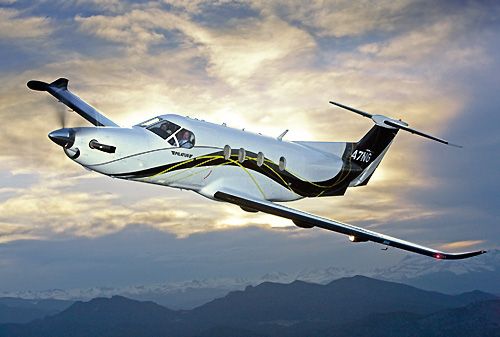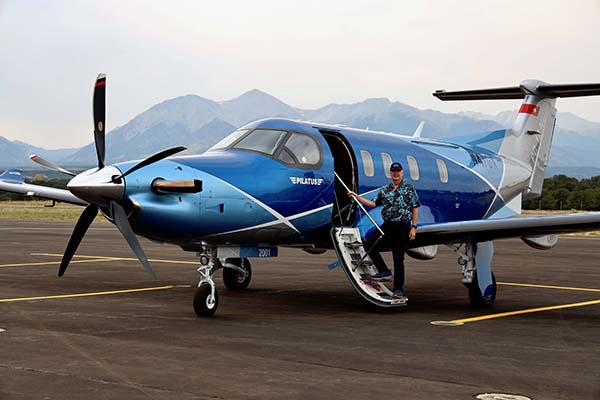
Got unimproved runways? The PC-12’s oversized tires can handle it, while trailing-link landing gear and an effective rudder make the single-pilot-approved big turboprop easy to land.New high-performance Single Engine Turboprop with 20 less fuel burn Oshkosh, Wis.. Moreover, the PC-12’s launch customer was the Royal Flying Doctor Service of Australia for its work in the extremes of the outback—an environment that suits the PC-12 just fine. For decades Pilatus has built models—including the PC-12 turboprop single—to specifically meet the missions of armed services throughout the world, including the U.S. Not Swiss manufacturer Pilatus. The PC-12 Calculator covers the PC-12/41, PC-12/45, PC-12/47 and PC-1Some airplane manufacturers build a model based on what it thinks a typical private owner might do with it. This PC-12 Weight & Balance and Performance Calculator (PC-12 Calculator) is a pilot assistance tool for verification of the weight and balance of the Pilatus PC-12 and the calculation of take-off, cruise and landing performance.
There simply isn’t any other jet to match this performance and the amazing versatility. Pilatus is hardly a newcomer to the aircraft market.The PC-24 has been built to operate from paved and even unpaved runways as short as 2,930 feet (893 m). That’s because it works just as well hauling owner-flown dirt bikes (we’re talking motorcycles, by the way) as it does corporate executives and charter passengers, thanks to a posh rear cabin that’s configurable in several seating arrangements. The cruise speed is 312.5 mph (500 km/h) and the stall speed is 74.8 mph (120 km/h).Still, the PC-12 turned out to be more versatile than perhaps even Pilatus envisioned. The empty weight is 5867 lb (2761 kg) and the maximum takeoff weight is 10,450 lb (4740 kg). A single engine turboprop passenger and cargo aircraft, the Pilatus PC-12 has the capacity for one or two pilots and nine passengers.

Pilatus Pc 12 Fuel Burn Series Of PC
But if you’re shopping the used market, you’ll focus on the more significant changes associated with a given series. This means if you were to buy a new PC-12, it would incorporate all of the improvements made to the aircraft over time. Up until the current PC-12NG model, Pilatus incrementally bundled modifications and improvements into 11 groups of airframe serial numbers. If you’re searching the used market for an early one, you’ll be hard pressed to find a PC-12/41 that hasn’t be modded (via landing gear mod and a paperwork change) for a 9920-pound maximum takeoff weight, essentially making it a PC-12/45 designation—the second series of PC-12 introduced around 1996.

Max flap travel of the semi-Fowler flaps is 40 degrees. Unlike the Cessna Caravan and even Socata’s TBM-series turboprop, the PC-12 doesn’t have spoilers for roll control, thanks to the smaller aileron size.After some complaints about heavy ailerons, Pilatus installed servo tabs on the ailerons, which, combined with the third generation of winglet design, delivered acceptable roll forces and response, nicely harmonized with pitch and rudder forces and an aileron/rudder interconnect. More on this model in a minute.The PC-12’s flight controls are cable driven, although the ailerons have pushrods in some sections. The series 11 is the current dash 47E model PC-12NG, which begins with serial number 1001. Earlier models had Universal EFIS.Outside the aircraft, the dash 47 model brought new winglets, a new empennage dorsal fin, new ailerons for better roll handling and new LED lighting.

For the pilot-plus-four range question used for evaluating VLJs and single-engine turboprops at the time, the answer for the older PC-12 is that a pilot plus five can still carry full fuel and go 1500 nautical miles at max speed cruise with NBAA reserves, meaning it can miss the approach and go to an alternate 100 miles away.The zero-fuel weight is 9040 pounds, which allows a hefty 2566 pounds in the cabin. With all 2704 pounds of fuel aboard, 1317 pounds may be carried in the cabin, or six 200 pounders and more than 100 pounds of baggage. The early-gen PC-12 Aviation Consumer flew back in 2007 for a review weighed 6474 pounds empty, giving it a useful load of 4021 pounds.
Lubrication oil quantity is checked via a sight gauge after landing, reducing the chance of engine failure because someone forgot to replace the dipstick correctly. The PC-12 does not have easily punctured fuel tanks and, to our knowledge, has never experienced a fuel leak as a result of minor wing damage or a fire due to major wing damage.Virtually all of the systems, as well as the engine, can be accessed via doors or hatches that unlatch and swing open easily—only one access port has to be unscrewed during a 100-hour inspection. Pilatus pointed out that the wing skin is made of stiffened clad aluminum alloy, riveted to the spar and ribs. Fuel balancing is automated, so the pilot doesn’t have to mess with tank selection or take any action unless the system should fail or a line person fills one tank much more than the other.The upside is that it was done in a fashion that fuel burn doesn’t affect the aircraft’s center of gravity the downside is that there’s fuel all the way to the leading edge, so it’s only protected by a deicer boot and the leading edge aluminum in the event of a crash. Max landing weight is 9920 pounds, so 575 pounds of fuel have to be burned off following a max gross launch.For occupant protection in an accident, no hydraulic or fuel lines penetrate the pressure vessel and the 406 gallons of fuel (402 gallons usable) in the wings (53-foot 4-inch span) is as far outboard as possible. Keeping just the pilot aboard and then loading the maximum 400 pounds in the aft baggage area (behind the rear seats) and then 500 pounds in the back end of the cabin, moved the CG to near the aft limit, indicating a satisfactory CG range in service.
It’s hinged to open vertically hydraulically, although it closes via an electric motor and can also be operated manually. There’s also a potty opposite the airstair door, with its own solid door for privacy.Speaking of doors, the head-turner with a PC-12 is its 53- by 52-inch aft cargo door. The seats recline and swivel and have three-point restraints. It’s no surprise that the PC-12 was designed to be generally similar in size and performance to the King Air, but at a sizable cost advantage with only one engine.At 5 feet wide with nearly 5 feet of headroom, the PC-12’s cabin is slightly larger than a King Air 200, with the extra width noticeable once inside.
The step past the console is not particularly difficult and while we would prefer a side stick from a crashworthiness perspective, the control yoke slides out of the panel so there’s no column to take up floor space. The cockpit is comfortable for virtually any size pilot. A forklift can approach the fuselage at a 90-degree angle.


 0 kommentar(er)
0 kommentar(er)
